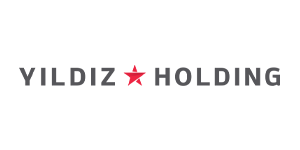- Clients SAS dans le monde
- Yildiz Holding

Keeping stores stocked using exceptional demand planning

The right products stocked at the right times and at the right locations.

15% improvement in demand sensing forecast accuracy
Yildiz Holding achieved this using • SAS® Demand Planning on SAS® Viya®
Yildiz Holding relies on demand planning from SAS to improve forecasts for manufacturing, inventory and sales planning processes
From food and beverages to everyday household items, even the smallest products need packaging. That is where the Turkish company Yildiz Holding shines. It is one of the largest consumer packaged goods companies in the world and primarily focuses on everyday products. Because many of its products are single-use, store shelves need to be frequently replenished to meet consumer demands. Doing so requires complex, accurate demand planning to avoid unnecessary stock outages and negative impacts on the already disrupted global supply chain. By better predicting demand, the organization can improve revenue and margins, as well as accurately estimate pricing and promotional efforts to get a higher yield on new product launches.
Yildiz Holding has plenty on its plate. Its products are purchased by nearly 4 billion customers – including its brands GODIVA, Ülker and McVitie’s – and the company employs 75,000 people with production facilities on five continents.
With so much inventory to fill, the demand sensing project plays a critical role, because even a slight deviation in forecasts can significantly affect manufacturing, inventory and sales planning processes. Yildiz Holding needed a solution that would deliver the most accurate forecasting possible while delivering support to the sales activity planning process to harness all potential business opportunities.
The forecasting accuracy rate of demand sensing across the group increased by 15%, while overstocks and understocks were significantly decreased. We eliminated several disjointed processes for demand sensing and replaced them with much faster, integrated ones.Gül Erol CIO, Yildiz Holding CEO, Yildiz Tech
Great forecasting is built on top-notch data
Utkan Menteş, Director of Advanced Analytics Solutions at Yildiz Holding, says the toughest challenges Yildiz Holding faces include consolidating and interpreting data from various sources to model demand forecasting in an environment with complex business logic and rules.
“Thanks to CRISP-DM [cross-industry standard process for data mining] methodology, we addressed the challenges iteratively and systematically,” he says. “SAS models also assisted a great deal in enabling us to understand, model and evaluate our data and make the necessary steps in deployment.”
Finding a demand sensing solution that balances inventory
Working with advanced analytics from SAS, Yildiz Holding gained insights into the daily business flow to create an integrated and practical demand sensing solution.
“Analyzing data, developing scientific models and enhancing the metrics are important stages that excite our team of data scientists,” Menteş says. “With SAS helping to increase our forecast accuracy, category managers, supply chain executives and demand planners have been able to improve the planning process.”
Inventory levels and sellouts can now be dramatically decreased. Marketing executives can also simulate the effects of their activities on customer demand and select the best sales activity mix for a more efficient marketing investment process.
SAS Demand Planning focuses on capturing demand signals about where, how and when demand is generated. By understanding customer demand across channels and comparing it with inventory levels, the models make accurate forecasts. This means high product availability, balanced inventory levels and reduced sellouts. An accurate demand plan ensures the right products are stocked at the right times and at the right locations.
The SAS implementation proved so successful that Yildiz Holding also wants to enhance its data and visual analysis with the SAS Viya platform to yield an even faster process for understanding data.
Yildiz Holding – Facts & Figures
300+
brands
49
product categories
4 billion
customers
Having the right tools to forecast accurately
For other organizations looking to benefit from demand sensing, Menteş advises following the correct methodology, using the right tools and building a motivated team that consists of analytical professionals with complementary skills. It’s important to define the right business metrics and then focus on achieving the end goal.
According to Gül Erol, CIO of Yildiz Holding and CEO of Yildiz Tech, the company is excited by the work done in partnership with SAS and is pleased with its improved forecasting through advanced analytics.
“The forecasting accuracy rate of demand sensing across the group increased by 15%, while overstocks and understocks were significantly decreased,” says Erol. “We eliminated several disjointed processes for demand sensing and replaced them with much faster, integrated ones.”
Les résultats présentés dans cet article sont spécifiques à des situations, problématiques métiers et données particulières, et aux environnements informatiques décrits. L'expérience de chaque client SAS est unique et dépend de variables commerciales et techniques propres, de ce fait les déclarations ci-dessus doivent être considérées dans un contexte. Les gains, résultats et performances peuvent varier selon les configurations et conditions de chaque client. SAS ne garantit ni ne déclare que chaque client obtiendra des résultats similaires. Les seules garanties relatives aux produits et services de SAS sont celles qui sont expressément stipulées dans les garanties contractuelles figurant dans l’accord écrit conclu avec SAS pour ces produits et services. Aucune information contenue dans le présent document ne peut être interprétée comme constituant une garantie supplémentaire. Les clients ont partagé leurs succès avec SAS dans le cadre d’un accord contractuel ou à la suite de la mise en œuvre réussie du progiciel SAS. Les noms de marques et de produits sont des marques déposées de leurs sociétés respectives.